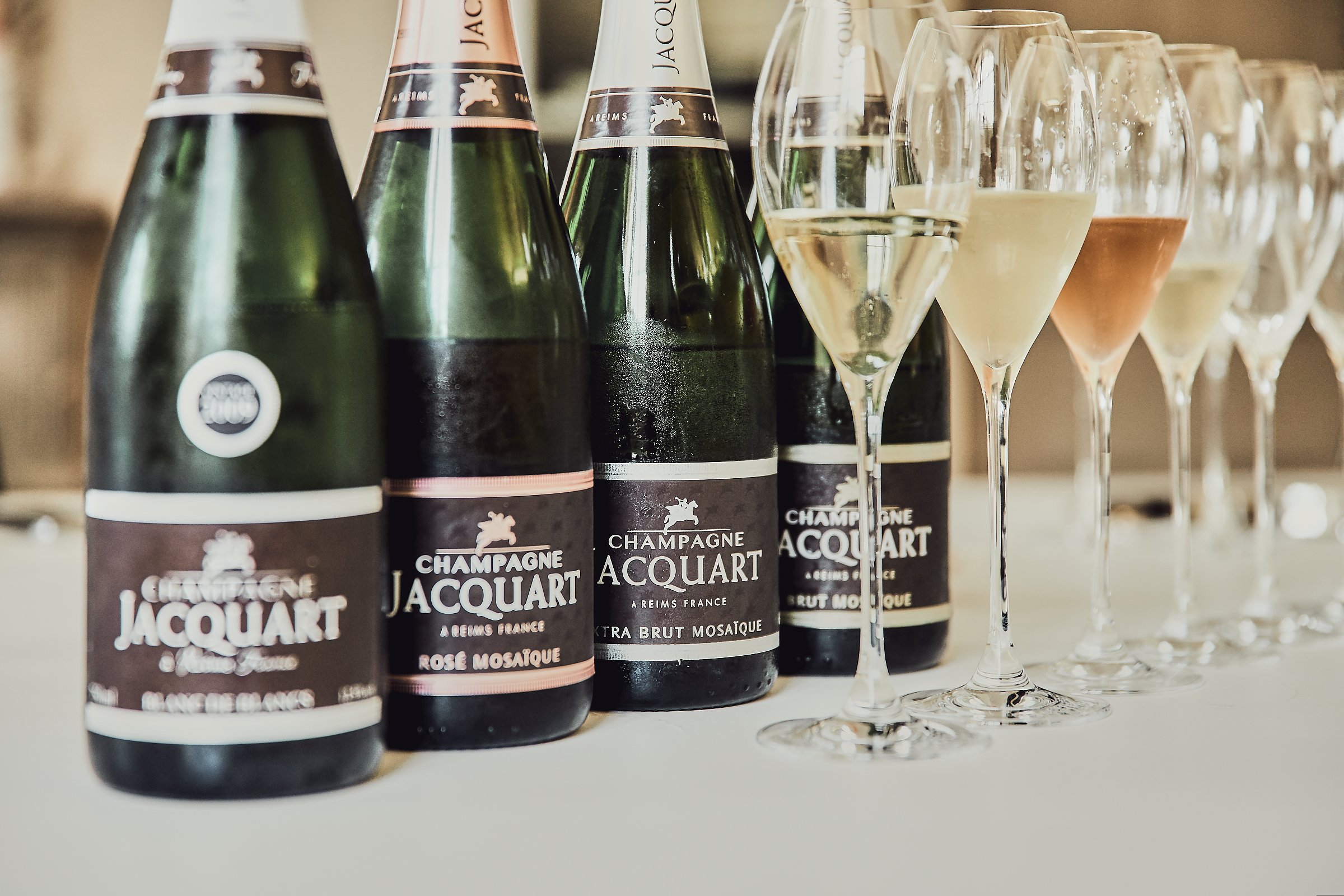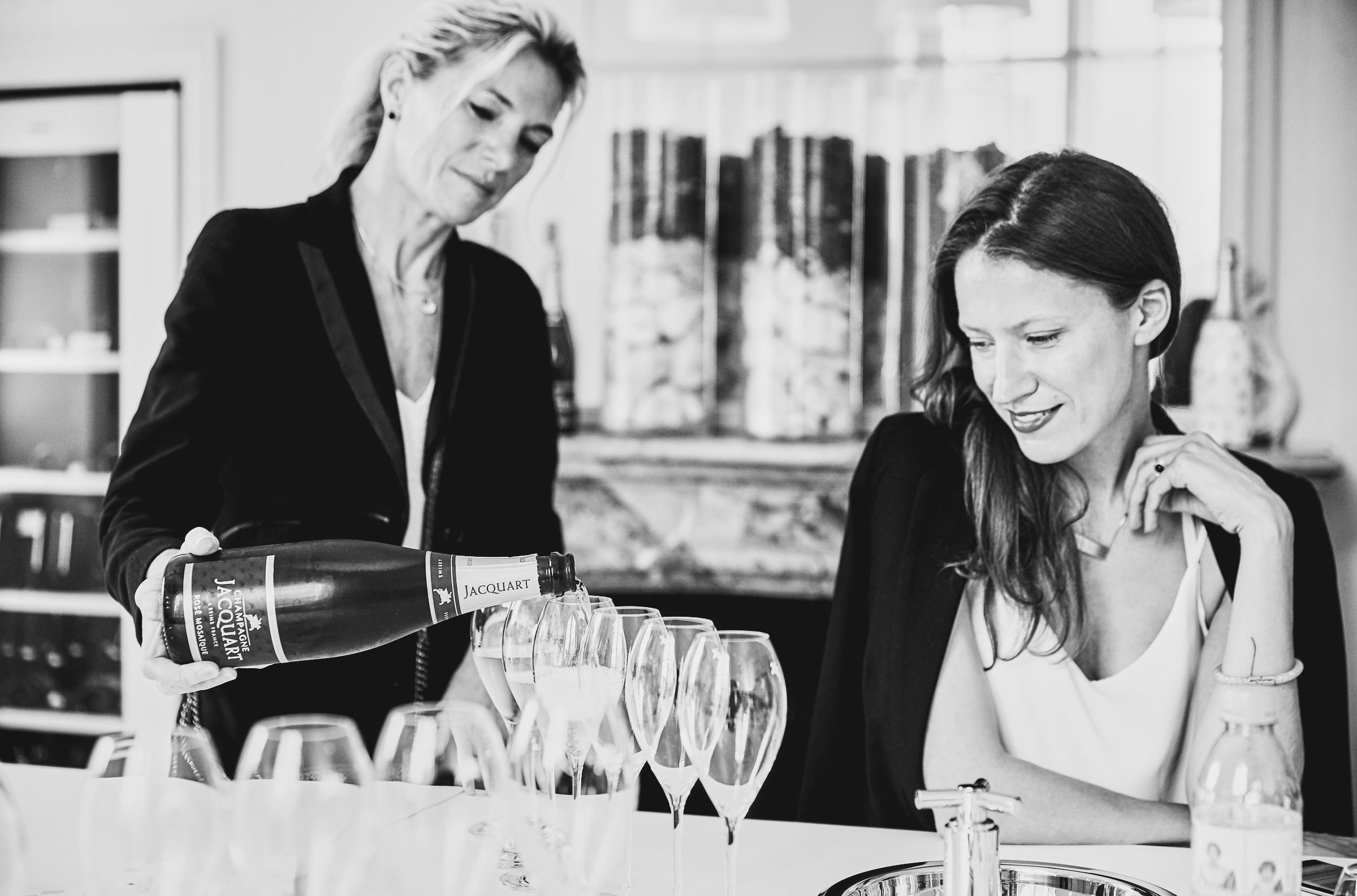From 30 to nearly 2000
Every time I have Jacquart, there is an aw! moment. The first time was simply a moment when everything seemed wow!, but then it happened again and again. Perhaps, the first time, it was because I didn’t know this particular champagne house and it seemed, somehow, that something unknown could not be delicious. Maybe it was simply delicious. But not once (truly not!) did it come to mind that the house had not been in existence several centuries, and even more unbelievable was the idea that the house was founded in 1964 with a powerful idea and goal.
“Jacquart champagnes are aged longer – 3 years for basic champagnes, 5‒6 years for vintage.”
Most frequently, when we think of champagne, we think of something of a heritage. Something that is prepared only by houses that put the year of their founding on the label. And that is usually at least 100 years old or more. But – it’s not always so. And Champagne Jacquart is proof that “youth” can conquer the world, so much so that champagne lovers can lose their minds and growers and makers can be happy.
The founding of this house was basically an uprising against the big and famous champagne houses, whose policies were not liked by the grape growers and wine makers. The basis for the creation of this house was the cooperative system, which united grape growers and wine makers who were tired, or even afraid of being in the same boat with the large wine makers. They decided to go their own way, decide what and how things would be produced, how it would taste, and for what price it should be sold.
It’s not that there are no other cooperatives in Champagne region (I’ve been to another really good one), but this is slightly different. It is unique in that is consists of cooperatives from three regions. Each has its chief wine makers, each of whom has their own vision and ideas about taste. They all get together to create a united, single champagne – one sip of perfection that will remain in your memory for a long time and will keep you coming back for more. In this case, the chief vintner Floriane Eznack arrived in Champagne when she was 30. Full of energy, she embodies the modern wine maker, who is open to change and the modern, but who doesn’t forget the basics of champagne.
“2400 ha, 1800 grape growers, 7% Champagne appellation”
The Jacquart label features a mosaic, and for good reason – the house consists of so many people and regions that it resembles a mosaic brought together to create just one thing – champagne. In 1964, when the cooperative was founded, they had only 30 employees, but today, they employ over 1800 growers and have arround 2400 hectares of grape vines, which constitutes 7% of all of the Champagne appellation – many hillsides and valleys, various types of soil and grapes – which offers the opportunity for longevity and wine making. Together it creates the one and only unique Jacquart style. They are men and women who want to work with the utmost respect for their final product, their land, nature, and themselves.
When the grapes have reached their optimal readiness, they are picked by hand and carefully brought to the press room where they are pressed into juice. Natural yeast is added to begin fermentation that takes place in large, stainless steel vats. The second fermentation reduces the acidity of Jacquart champagne and rounds it out, while maintaining the freshness (by the way, not all houses have a second fermentation process). And that’s not all, because only then does the champagne get bottled and begin the long road of storage – it is kept much longer than other champagnes. The basic champagne sits three years, but vintage champagne, 5‒6 years.
Thanks to the recent arrival of the house, it has the most modern facilities, enabling it to create champagne that excels in everything. That does not mean that the house does not respect tradition. Not at all, because tradition is everything, and these grape growers and wine makes determine what needs to be done, but the laboratory and modern technology helps understand the processes better and improve them.
The Jacquart house, located on the outskirts of the centre of Reims, has been the home to the famous Hôtel de Brimont since 2009. Just like the champagne, the building combines elegance and modernism, and the final touches were polished by French architect Paul Blondel, who supplemented the décor in the style of Louis XV.
““Imagination, details, and time ‒ three things necessary to create Jacquart Cuvée Alpha.” ”
If there was only one champagne with which you were to start and finish your Jacquart journey - it should be Blanc de Blancs Vintage, which joins particularly good harvests with exemplary Chardonnay grapes. Creamy and full-bodied, with hints of freshly baked bread, vanilla, and nuts, it has not lost its freshness and fruitiness – a combination of citrus and pear, and even a bit of fresh apples. It’s ideal with food – in my opinion, anything creamy or with seafood would always be good. And oysters, of course. And another product that the house itself suggests – goat’s milk cheese.
And then there are the remaining Mosaïque champagnes (Brut, Extra Brut, Brut Rosé) and Alpha. My pick? That’s like asking which of your children you love most! I would drink any of the Jacquart champagnes again, and would continue to do so forever. Different champagnes for different occasions. And if you need an expensive present for a special occasion, choose Alpha. It’s their most expensive, but not quite as expensive as similar quality champagnes from other houses, yet fine-tuned to perfection. It embodies so much of what champagne means to me. And it’s best enjoyed with food.
Text: Signe Meirane
Photos: Armands Meirans






